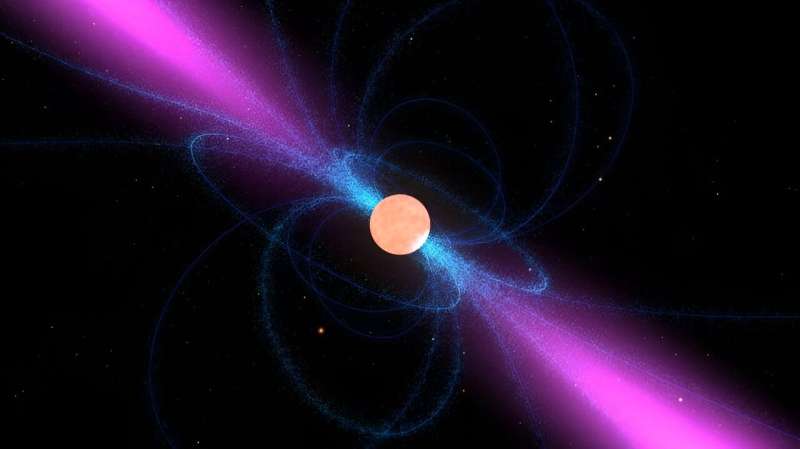For decades, dark matter has puzzled astronomers and physicists alike. Experts believe it makes up around 27% of the universe, but no one knows what dark matter is actually made of. Several theories posit that it could be made of unidentified particles that rarely interact with physical matter in our Universe.
While several experiments over the decades have been conducted to detect and identify dark matter, physicists, including Professor John LoSecco at the University of Notre Dame, are trying to use pulsars, a sort of “ticking” neutron star, to detect unknown mass concentrations that could be dark matter. LoSecco is presenting his research at the National Astronomy Meeting at the University of Hull in mid-July 2024.
“On Earth we have atomic clocks and in space we have pulsars,” LoSecco said in a recent press release. “While gravitation has been known to slow down light for more than a century, there have been very few applications so far.”
What are Pulsars?
Scientists have found over 2,000 pulsars in the galaxy. These neutron stars get their pulsar nickname due to their regular emittance of electromagnetic radiation, which can range from milliseconds to seconds time intervals. This makes them act as galactic “clocks,” as their “ticks” can be used reliably to measure a range of variables around the galaxy.
What is Dark Matter?
Dark matter was first discussed in the 1930s when astronomer Fritz Zwicky coined this term while studying a galaxy cluster with over 1,000 galaxies. Zwicky noticed the cluster was moving faster than predicted for the amount of matter within it, suggesting that additional undetected matter was involved in the cluster’s movement.
In the 1970s, female astronomer Vera Rubin validated the existence of dark matter. She and several colleagues found that individual galaxies can contain undetected matter while rotating.
Because this matter is entirely dark and does not interact with electromagnetic forces, it’s challenging to determine what dark matter is comprised of. Researchers have only been able to infer dark matter’s existence due to its gravitational effects on visible matter, such as spinning galaxies.
One of these effects is known as gravitational lensing, in which gravitational forces can distort and magnify the light emitted from faraway galaxies. This distortion alerts astronomers and physicists that unknown forces may be at work to pull or push galactic movements, including dark matter.
Theories about dark matter include a variety of explanations, from parallel universes to extra dimensions. If dark matter could be detected, it would be a significant step forward in its identification.
Could Pulsars Actually Detect Dark Matter?
LoSecco and his collaborators have been using pulsars’ regular emissions via the PPTA2 survey data released from the Parkes Pulsar Timing Array as a measurement tool to detect unseen masses nearby. The researchers have observed significant delays and variations in pulsar emission timings, suggesting that electromagnetic radiation has to move around an unseen mass between the pulsar and the telescope.
Several telescopes, based in Cheshire, UK, were used in the data collection, including the Nançay, Westerbork, Effelsberg, Green Bank, Parkes, Arecibo, and Lovell. Looking at precision data from 65 pulsars with emissions in the millisecond timescale, the researchers saw around 12 separate incidents that could be dark matter interactions.
“We take advantage of the fact that the Earth is moving, the sun is moving, the pulsar is moving, and even the dark matter is moving,” said LoSecco
The emission variations show well-defined shapes and sizes proportional to their predicted mass. For instance, with a mass comparable to the size of our sun, a delay of around 10 microseconds would be produced. LoSecco and his team have found delays 10,000 times smaller than that, suggesting that the dark matter mass is ginormous.
“We observe the deviations in the arrival time caused by the change in distance between the mass we are observing and the line of sight to our ‘clock’ pulsar,” added LoSecco.
The researchers also improved the pulsar timing data by using the dark matter interactions to filter out noise, which can clean up the data for use in other gravitational analyses and experiments.
“The true nature of dark matter is a mystery,” said LoSecco. “This research sheds new light on the nature of dark matter and its distribution in the Milky Way and may also improve the accuracy of the precision pulsar data.”
Kenna Hughes-Castleberry is the Science Communicator at JILA (a world-leading physics research institute) and a science writer at The Debrief. Follow and connect with her on X or contact her via email at kenna@thedebrief.org

